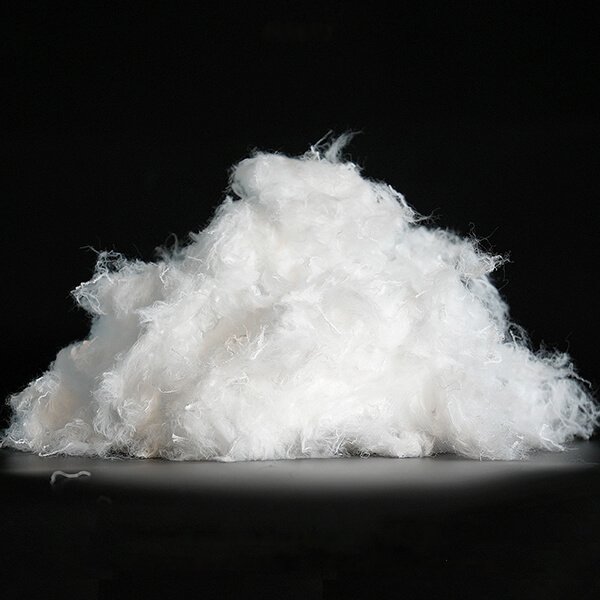The Sustainable Revolution of Polylactic Acid Fiber
Discover how polylactic acid fiber is reshaping eco-friendly textiles, combining innovation, sustainability, and biodegradable performance.

Introduction to Polylactic Acid Fiber
In the heart of the sustainability movement, one material is weaving a new narrative in the textile world—polylactic acid fiber. Derived from renewable resources and offering a promising eco-friendly alternative to traditional synthetic fibers, this innovation is reshaping how industries—and people—think about clothing, comfort, and the planet.
What is Polylactic Acid (PLA)?
Polylactic Acid, or PLA, is a biodegradable thermoplastic derived primarily from fermented plant starch—typically corn, sugarcane, or cassava. It’s been widely used in packaging, but more recently, it's become a rising star in the textile industry for its sustainability credentials.
Origins and Development of PLA Fibers
Although the concept of bioplastics isn't new, PLA’s application in fibers began gaining momentum in the early 2000s. With rising consumer demand for green alternatives, manufacturers started to innovate ways to spin PLA into soft, wearable threads.
Why PLA is Gaining Traction in Textiles
The global push toward carbon neutrality and the need for materials that don't linger in landfills for centuries have thrust PLA fibers into the spotlight. Their renewable origin and decomposition ability give them a distinct edge over oil-based fibers like polyester and nylon.
Environmental Benefits
Biodegradability and Compostability
One of the most compelling features of polylactic acid fiber is its ability to decompose under industrial composting conditions. Unlike synthetic fibers, which can take hundreds of years to break down, PLA fibers can degrade in just a few months when processed correctly.
Renewable Resource Base
PLA fibers come from annually renewable crops, unlike fossil fuel-derived materials. This not only reduces dependence on limited natural resources but also makes the production process inherently more sustainable.
Lower Carbon Footprint Compared to Petroleum-Based Fibers
Producing polylactic acid fiber emits significantly less greenhouse gas compared to traditional synthetics. From crop to fiber, its life cycle results in a smaller carbon footprint—an essential step toward climate-friendly manufacturing.
Performance and Technical Characteristics
Physical Properties of PLA Fibers
Lightweight, breathable, and naturally soft, PLA fibers offer a luxurious feel without the environmental guilt. Their silky sheen and ease of dyeing also make them appealing for a variety of fashion-forward applications.
Strength and Durability
Don’t let the biodegradable label fool you—PLA is tough. It holds up well in both woven and non-woven applications, with enough durability for activewear, outerwear, and daily use products.
Moisture and Thermal Management
PLA fibers exhibit moisture-wicking capabilities, making them suitable for sportswear. They also maintain stability in cooler temperatures and offer a light insulating quality, lending comfort across seasons.
Industrial Applications
Fashion and Apparel
Brands seeking sustainable fabrics are flocking to polylactic acid fiber for clothing collections that speak to eco-conscious consumers. From t-shirts to yoga pants, this fiber fits right in with the green fashion trend.
Home Textiles
Curtains, bed linens, and upholstery made from PLA are not only environmentally responsible but also stylish and functional. They offer stain resistance and breathability, ensuring a long-lasting home decor option.
Medical and Hygiene Products
Thanks to its non-toxic nature, PLA fiber is increasingly used in medical textiles—like surgical masks, wound dressings, and hygiene pads. Its ability to break down safely adds another layer of appeal in sensitive environments.
Challenges in Mass Adoption
Cost and Production Scale
Compared to polyester, PLA fiber is still relatively expensive to produce, especially at scale. The dependency on agricultural feedstocks and newer processing technology contributes to its higher cost point.
Processing Limitations
While PLA is easy to work with in many applications, it does have heat sensitivity. This means it might not perform well in high-heat environments or endure aggressive laundering without special treatment.
Consumer Awareness
Many people still don’t know about polylactic acid fiber or how it differs from other “eco” materials. More education and transparent labeling are necessary to help shoppers make informed choices.
The Future of PLA in the Textile Industry
Technological Innovations
Researchers are finding ways to enhance the performance of PLA—such as improving its resistance to heat and increasing flexibility. Blending PLA with other sustainable fibers is another growing trend.
Global Market Trends
With the rise in environmental regulations and growing consumer demand for green products, the PLA fiber market is projected to grow exponentially over the next decade.
Circular Economy and Lifecycle
PLA fits well within the circular economy model. With closed-loop composting systems and recycling advancements, this fiber promises a life beyond the landfill.
Conclusion
The textile world is undergoing a green transformation, and polylactic acid fiber is playing a starring role. By marrying sustainability with performance, it presents a compelling case for the future of fashion and beyond. Although challenges remain in scale and awareness, its potential to revolutionize the industry is undeniable. As innovation advances and consciousness grows, PLA could be the fiber that finally threads sustainability into our daily lives.
What's Your Reaction?

















.jpg)